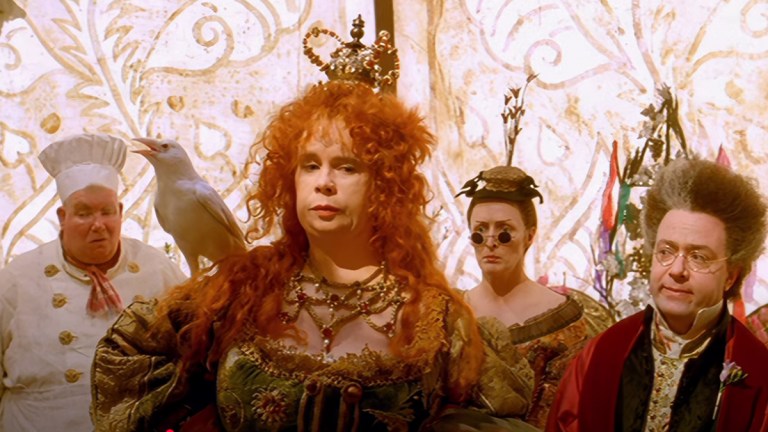They were one tiny background element in a web of painstaking design from theGormenghastart team.
Spot the painting, sort of thing, explained director Andy Wilsonin this behind-the-scenes interview.
We were trying to make an artists vision of the world.

In that, the four-partGormenghastadaptation excelled.
And so it was, for episode one, drawing a healthy audience for the channel of 4.2 million.
By the next episode though, that number had almost halved to 2.4 million, and dwindled from there.
Despite praise for its design and cast, the adaptation was quickly labelled a flop.
What made viewers turn away?
The story, said some, and the unlikable characters.
There was no serious content in terms of narrative or people you take seriously enough to want to watch.
I have to admit I turned off.
The creators ofGormenghastseem to have had something of a hold-your-nose attitude to the fantasy genre themselves.
As director Andy Wilson explainedin this featurette.
Its all very realistic and the characters have a very realistic set of emotions.
Thats one take on it.
BeingGormenghastseems to have been the adaptations real problem.
These characters are vain, greedy, stupid, self-serving and callously insane, as befits this class satire.
Gormenghastwas very much not a good old days drama.
It was weird and absurdist and political and loftily ambitious.
The planned TV versionannounced in 2018would probably have fallen at the same hurdles.
But what a folly the 2000 version was.